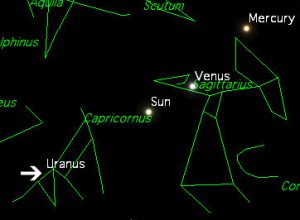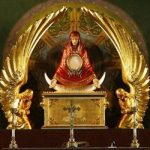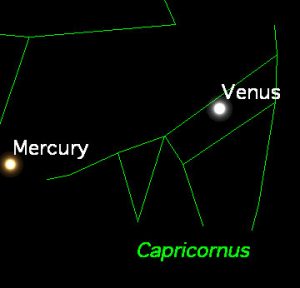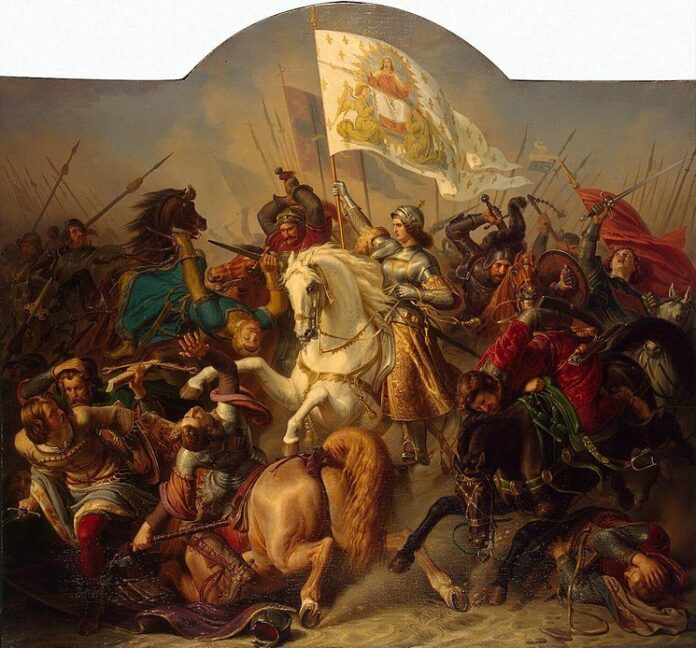Martyr, saint and military leader Joan of Arc, acting under divine guidance, led the French army to victory over the British during the Hundred Years’ War.
Joan of Arc, nicknamed “The Maid of Orléans,” was born in 1412 in Domrémy, Bar, France. A national heroine of France, Joan of Arc led the French army to victory over the British at Orléans, at age 18. Captured a year later, Joan was burned by the English and their French collaborators as a heretic. She was canonized as a Roman Catholic saint 500 years later, on May 16, 1920.
Early Years
In 1412 (on January 6, according to some sources), Joan of Arc was born into the French peasant class to devoutly religious parents in the village of Domremy. Beginning around age 12, she heard voices: those of St. Michael, St. Catherine, and St. Margaret. She also possessed many characteristics common to her contemporary female visionaries, who were a notable fixture of her time—extreme piety, claims of direct communication with the saints, and a reliance on individual experience, as opposed to that found through the institutions of the church, of the presence of God.
As history would prove, beyond these traits, she also possessed remarkable mental and physical courage.
Historical Background
The crown of France during Joan’s time was in dispute between the dauphin, Charles (later Charles VII), and the English king, Henry VI. Henry’s armies were occupying much of the northern part of the kingdom with the Burgundians (loyal to the Duke of Burgundy and allied to the English), and the dauphin’s state was more tenuous yet, since, five years after his father’s death, he still had not been crowned king of France.


It begins with a prophecy by Marie d’Avignon that France having been lost through a women, would be restored by a girl. Joan fits the definition of a “girl” as she remained a virgin throughout her life and I think it can be agreed that she restored France. So we have our first piece of evidence that is certainly odd to say the least.
Birth, Precision Mysticism and Constellation
One of the suspiciously precise details we know about Joan is her exact time of birth—one hour after sunset on January 6, a day variously known as the Feast of the Epiphany, the Day of the Three Kings, and the Twelfth Day of Christmas. Surprisingly, neither Joan’s mother nor any other witnesses at the “nullification” trial mentions that Joan’s birthday was an official holy day.
Considering the trial was meant to show that Joan’s mission had indeed been divinely inspired, I found that silence curious. And so I decided to consult a record I had discovered during my previous research—the arrangement of the heavens on the day in question.


In Shakespeare’s “Henry VI,” written 179 years later, the Dauphin challenges Joan to a mock swordfight. Soundly trounced, Charles calls Joan the “bright star of Venus, fall’n down on the earth.”
Let’s now consider the name “Arc,” which in French means “bow,” and has also come to mean the leap electricity makes between unconnected points. It’s intriguing that on Joan’s birthday Venus drew the bow, perhaps to indicate that a woman had been chosen to let fly an arrow of hidden truth into the future, while Mercury, a.k.a. Hermes, would speed it on its way. And while the Dauphin’s reference to Joan as Venus fits this scenario neatly, a prophecy that had caught the imagination of the day fairly shivers with resonance. Attributed to Merlin, the prophecy foretold that a virgin riding Sagittarius would save France!


When Joan is received by the Dauphin, on March 6, Venus is riding the back of Capricorn, and in “Henry VI” a messenger brings news of Joan as “a holy prophetess new risen up.” In an initiatory rite of the Freemasons, a fraternity thought to have continued the legacy of the Templars, initiates are “raised” into the order from a symbolic death, and one of the persistent tales told about the rite is that initiates must also ride the back of a goat.


The Latin words mean “dissolve” and “combine,” and might well describe the Templar business model upon the order’s dissolution.
Let’s get back to Joan’s nativity.
As the sun set in the west, the Orion constellation rose in the east. Since I have covered Orion’s significance in previous articles, I will not do so here—except to add that tiny and distant Pluto sat above Orion’s head like an invisible crown.
To Orion’s left the planet Neptune, God of the Oceans, separated the Gemini twins, and the Twelfth Day of Christmas became Twelfth Night—the night that Joan was born. One hour after sunset, weather permitting, Orion and Gemini would be shining brightly in the eastern sky.
Scholars have long argued the significance of Shakespeare’s title “Twelfth Night, or What You Will” since the play offers no explanation. It is the story of twins, male and female, who are separated by a storm at sea, each thinking the other has drowned. The woman masquerades as a man and, until the end of the play, there is much gender confusion, with a little cross-dressing thrown in for good measure.
Since the historical record conveniently tells us that Joan was born on Twelfth Night, it’s interesting that Neptune, named after the god of the oceans, separated the Gemini twins on the night of her birth, just as Shakespeare’s twins were separated by a storm at sea.
The burning mystery of Joan of Arc DNA and scientific research
Much is unknown about the life of the warrior. Facts have often been mixed with myth and theory. But what is generally agreed is that Joan’s body was burnt three times by the English and ashes from the foot of the pyre were supposedly discovered in 1867, lurking in the Paris loft of an apothecary .
French scientists, who have been studying those ashes, confirmed yesterday that a piece of cloth found among the remains may have been a fragment of Joan of Arc’s gown. A new series of DNA tests of bones and tissue found among the ashes is expected to confirm that they belong to a female.
These initial discoveries suggest recent controversial claims surrounding the death of Joan of Arc are wrong. One theory, put forward by Ukrainian anthropologist Sergey Gorbenko, suggested Joan was not even burnt at the stake but lived to the age of 57. Another theory is that she was a man.
But the initial discoveries by forensic anthropologist Philippe Charlier, the project’s leader, indicate that the standard version of Joan of Arc’s death – by being burnt as a witch by the English – appears to be right, although the research has added intriguing detail to the story of her execution. Further tests were needed, said Charlier.
Tests on one bone found in the relics showed it was the femur of a cat. The discovery tallies with the medieval practice of throwing a black cat on a witch’s pyre so as to appease the devil, according to Charlier. ‘However, this femur is not burnt – it just looks it – so maybe we are just dealing with a passing cat,’ he said.


According to historians, Joan of Arc was 19 when she was burnt at the stake in Rouen by the English on 30 May, 1431. She died of smoke inhalation. The Cardinal of Winchester is recorded as having ordered her to be burnt a second time. Her organs still survived this fire, so a third burning was ordered to destroy the body completely. Her cinders and debris were to be thrown into the Seine.
However, in 1867 ashes that were said to include remains of Joan of Arc were found in the Paris loft of an apothecary. These were transferred to a museum in Chinon where they are still kept.
Charlier said his team’s findings were preliminary and that work would continue at least until February next year. He added that he expected his team would be able to establish that the Chinon remains belonged to ‘a female juvenile who was burnt several times at short intervals’. Charlier said pieces of wood among the relics, as well as the quality and age of the linen cloth should allow his team to date them within a 30-year range of accuracy and establish which region of France they are from.


Charlier came to prominence last year when he ascertained that Agnes Sorel, the favourite of King Charles VII, died from mercury poisoning. He took an interest in Joan of Arc because her presumed remains were stored in the same Chinon museum as those of Sorel.
An illiterate farm girl from Lorraine in eastern France, Joan of Arc disguised herself as a man in her campaigns. During her battles against the English and armies of the Duke of Burgundy, Joan was said to hear voices from a trio of saints telling her to deliver France from her enemies. She was finally captured and sold to the English, who had her tried for witchcraft in Rouen.
Joan of Arc was declared a saint in 1920. During the Second World War, both Vichy France and the French resistance claimed Joan of Arc as a national symbol for their cause.
Sources used and read nore:
http://www.britannica.com/
https://www.wikipedia.org/
http://www.mythomorph.com/
http://www.unexplained-mysteries.com/
http://www.theguardian.com/
http://christophereverard.blogspot.com/
Best Regards
TBU NEWS





